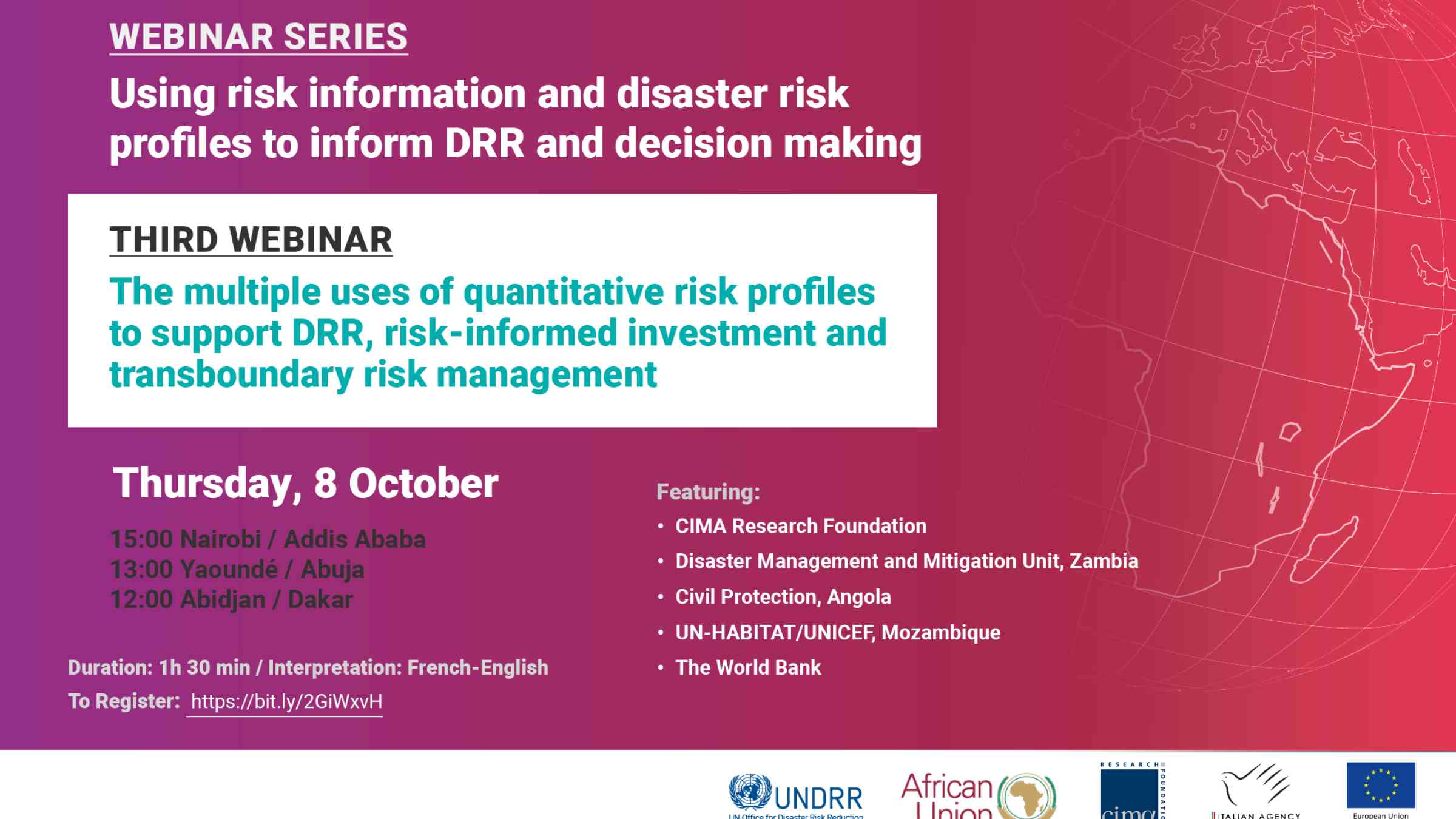Webinar 3: Using quantitative risk profiles to support disaster risk reduction and risk-informed investment in Africa

On behalf of United Nations Office for Disaster Risk Reduction (UNDRR) Regional Office for Africa, the African Union Commission (AUC) and the Centro Internazionale in Monitoraggio Ambientale (CIMA) Foundation we are pleased to invite you to the third webinar in the series entitled Using risk information and disaster risk profiles to inform DRR and decision making.
This webinar focuses on the multiple uses of quantitative risk profiles to support disaster risk reduction,
risk-informed investment and trans-boundary risk management.
The webinar will be held on Thursday 8 October at 15:00 Nairobi / Addis Ababa | 13:00 Yaoundé / Abuja | 12:00 Abidjan / Dakar.
Duration: 1h 30 min / Interpretation: French-English
For more details please see attached the concept note and a teaser of our upcoming publication with outlines select applications of probabilistic risk profiles.
Register here: https://undrr.zoom.us/webinar/register/WN_bcRn5t8qQ1WO95bv2JXACQ
The aim of the third webinar is to foster a discussion around two issues:
- Outline a number of practical applications, aiming to promote the use of probabilistic risk information in order to inspire policymakers and decision makers to apply risk information according to their own needs.
- Present African case studies of the use of risk profiles that have been applied as tool for informing disaster management actions already in place or, used as a first step towards designing new actions to curb the deadly cost of disasters.
Outcomes of the third virtual working session:
- Participants are acquainted with principal applications of quantitative probabilistic disaster risk profiles;
- Participants will appreciate the expectations of risk assessment users
- Participants will appreciate how distinct metrics are used to inform planning across different sectors
Speakers invited to contribute to the 3rd webinar:
- CIMA Research Foundation - Reflecting on select applications of risk profiles and presentation of the Guidelines for the use of risk information;
- Disaster Management and Mitigation Unit, Zambia - Use of risk profiles for DRR advocacy and national development planning in Zambia;
- TBC, Kenya - Use of risk assessment in support of the NAP process;
- Civil Protection, Angola - Use of risk profiles for DRR awareness raising and sub-national level in Angola;
- UN-HABITAT/UNICEF, Mozambique - use of probabilistic risk assessment in support of safe schools;
- The World Bank - Use of probabilistic risk assessment to understand the direct and indirect benefits of DRR interventions in order to enhance wellbeing and resilience.